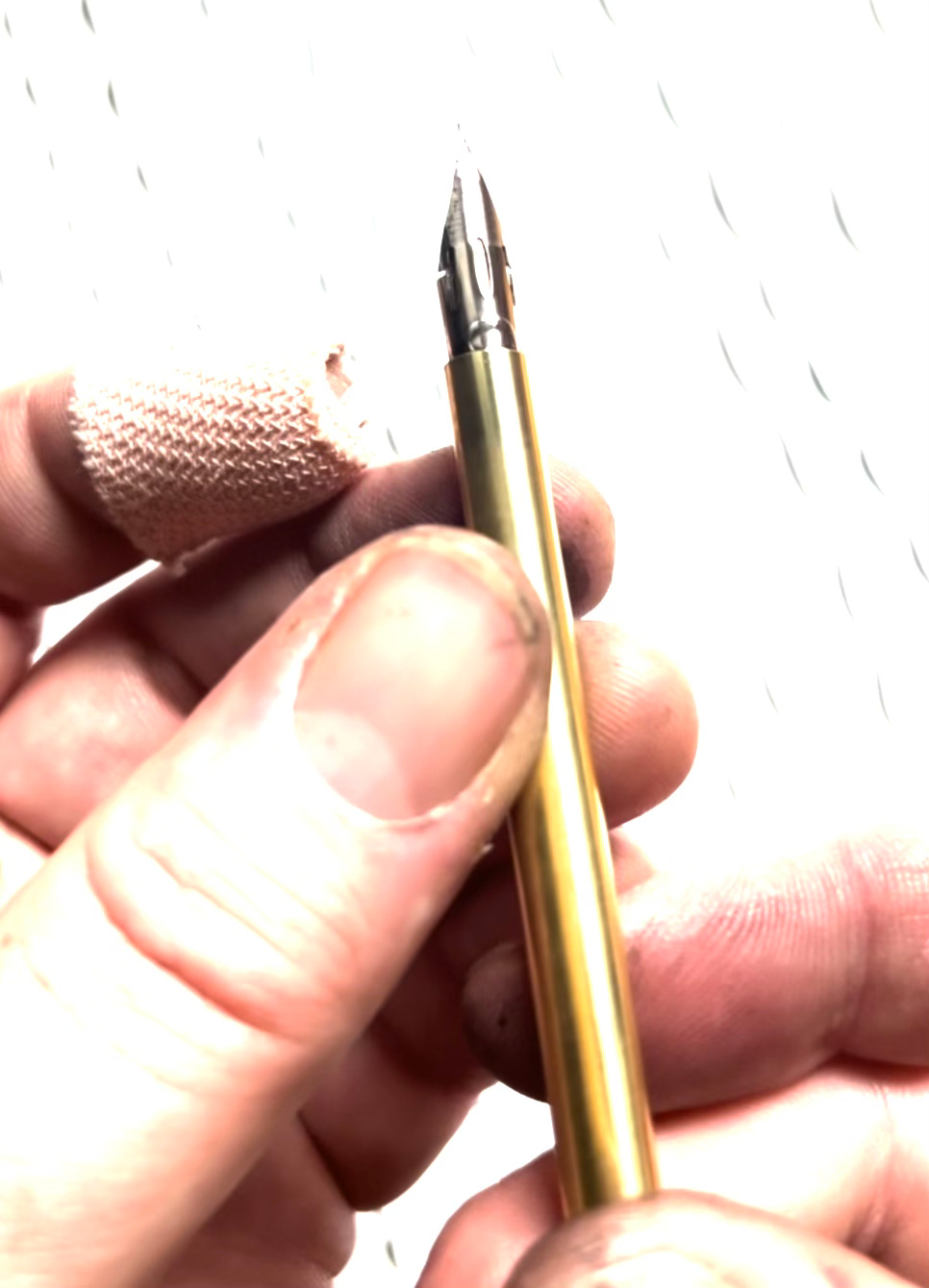More Pen Things
Good ideas can be portable
So you’ve probably heard me blabbing on about that piston blade pen I make. I recently discussed it on the Illustration Department podcast with Giuseppe Castellano. It was a good chat, and if you have a hole in your heart that was left by the end of the Make It Then Tell Everybody podcast, I’d bet this podcast would help fill it. If you’ve been umm-ing and ahh-ing about whether or not to buy one of these pens, now would be a great time.1
For a long time, I’ve been toying with the idea of a fountain pen that holds a g-nib. People ask me about it pretty frequently.2 I’ve tried a bunch of different ways of achieving this, from buying pre-made pens, modifying existing pens, even 3d printing components3 myself to see if I can get something that is functional. Although some of those approaches seem promising, there’s been nothing that I’ve been ultimately satisfied with.
The criteria I’ve been using to think through this problem has been;
Usefulness. Is this the sort of thing that provides extra utility to the working artist, or is it a bit of a gimmick?
Ease of Use. Is it intuitive, straightforward and easy to use? I found that replacing nibs in traditional fountain pens increased the risk of damage to the nib4. I don’t fancy that.
Ease of Repeat Use. I’ve had a few g-nib pens that work fairly well, but are prone to clogging, and take extra time and care to make sure that parts are clean and won’t glue themselves solid with dry ink over a weekend of not drawing with it. I’d want it to be so simple that it barely needs thinking about, or so easy to fix if it does go wrong that it’s not a problem.
When someone asked me about it again the other day, I realised that (depending on the radius of the g-nib) I could modify the mechanism I’d designed for the piston pen to achieve a g-nib with an ink tank that was relatively easy to use.
I don’t think I’ve quite solved every problem quite yet, but the prototype I’ve been tinkering with this week jumps me a few big steps forward. Here’s a quick video I made showing the basic construction/function;5
The utility side of this isn’t quite ironed out yet, there’s some things I want to try to get a more even and predictable flow of ink - this version has a tendency to sometimes drip out a bunch of ink after it has been dipped and before you can get it to the page6. Even so, the capacity to keep drawing is about 20x higher7 than you’d likely get from a single dip on a regular g-nib, which feels pretty useful to me.
There’s plenty more to figure out with this design, but it certainly feels like a step forward in solving a problem I’ve been thinking about for a few years now.
It’d be quite nice to have a neat twin-pack of piston blade pen and piston g-nib available. I’m not quite there yet, but it certainly feels achievable.
It’s a good feeling to have sat on a problem for a while and then figure out a solution. Very satisfying.
I’m probably going to raise the price next week to reflect the time it takes to make them and I’ve also just had probably the hardest month of my life. Might talk about that some other time though.
A g-nib is a flexible steel nib that is capable of incredible variations in line width, from very fine to pretty darn wide. It’s pretty great, pretty inexpensive and widely available.
I’ve got a couple of 3d printers, a filament one that is temperamental and fussy and a UV Resin one that is less fussy but more messy. Can’t have it all.
I’ve seen people chewing the nibs out of pens with a pair of honking great pliers, a sure way to potentially mess ‘em up good.
Notice the dressing on my left index finger. If you listened to the Illustration Department podcast, this is the injury I spoke about right at the start. It Was A Bad One.
You’d call that a bug, not a feature.
Possibly more, I’d expect it to have a higher capacity once I’ve squished all the bugs in the design.


Dan, will you have any with you at the Lakes this weekend?
Sounds fantastic! I'm always looking for a way to make using dip pens more travel-friendly. I just want to be able to use my Nikko G nibs on the go, and fountain pens aren't quite right.
Excited for the future developments!